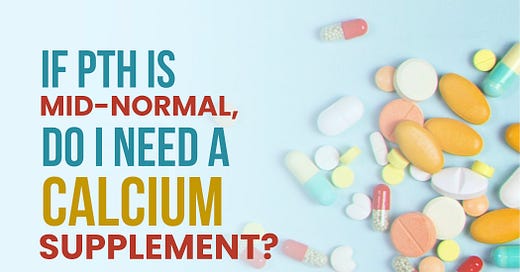Introduction
I'm assuming that by midrange you mean it's 30. If you mean it's 40, then no, you're deficient or you're probably deficient. You need to test how you respond. But what I would say is, it would still be good for you to try increasing that and see if the PTH goes down anymore. Because my baseline for where I suspect that someone's PTH is maximally suppressed is 30. But the evidence that it's maximally suppressed is that it doesn't get suppressed by more calcium and vitamin D. If it goes down in response to calcium and vitamin D, then it wasn't maximally suppressed. Where you want to be is not 30 to 20. It's the point of maximal suppression.
Then the final thing is magnesium deficiency can compromise your ability to make PTH. I don't think that the average person in our society is deficient enough in magnesium for that to be relevant on the basis that population-wide most people have too much PTH. That contributes osteopenia and osteoporosis. But the big caveat here is if you are magnesium-deficient, then that might invalidate most of what I said if you're deficient enough to affect PTH.
If your PTH is around 30 and not higher than that, you're probably fine. But it's good to know your magnesium status because if it's really bad, that could change that interpretation. It's also good to know if adding more calcium suppresses your PTH further, because if it does, that's probably calcium that you need.
This Q&A can also be found as part of a much longer episode, here:
Listen to the Audio
I highly recommend watching the video above but you can also listen to the audio here:
Read the Transcript or Leave a Comment
Masterpass members have access to the transcript below.
Masterpass members can also read and leave comments below. Non-members can read and leave comments on the general podcast page.
Learn more about the Masterpass here.




